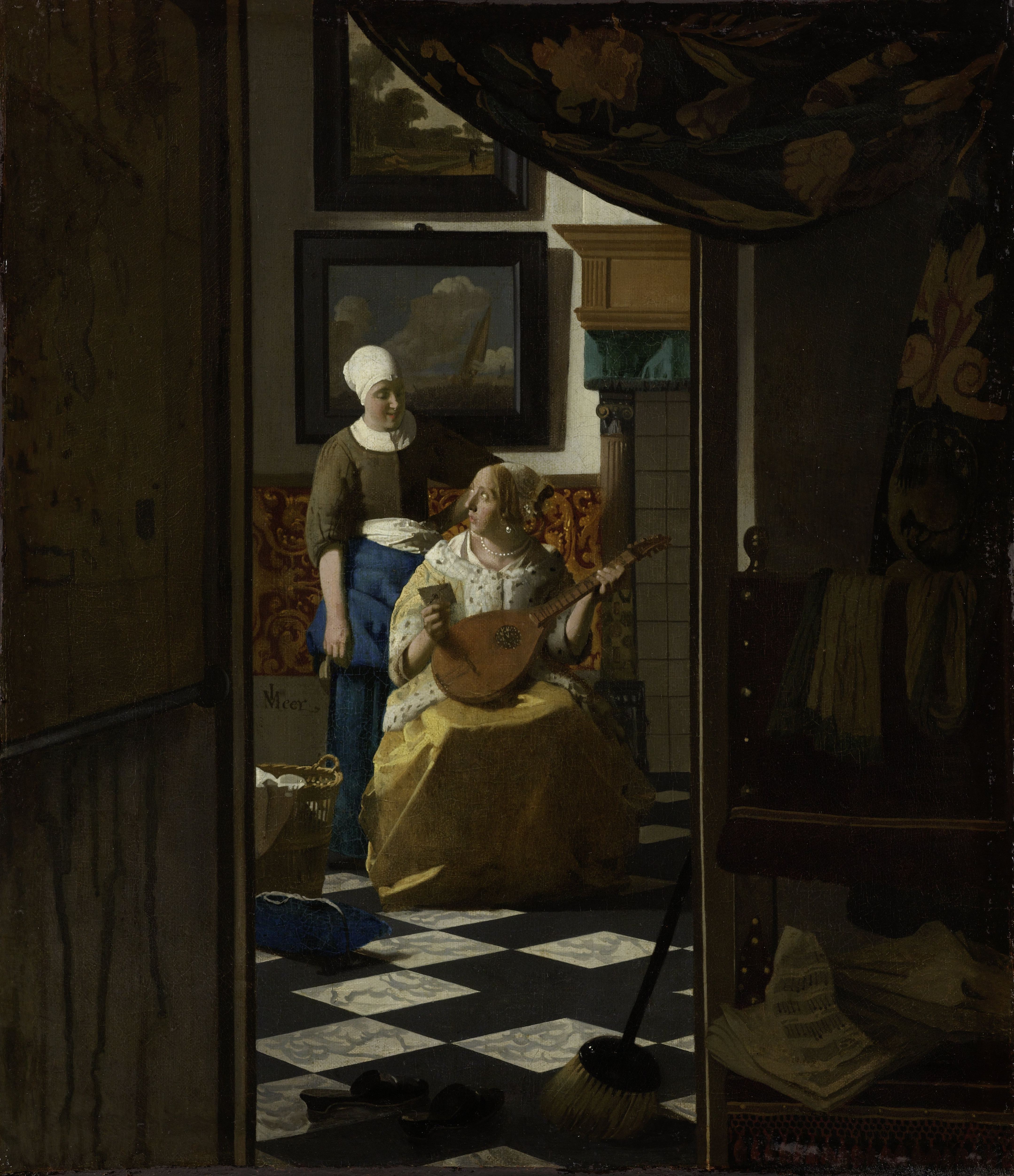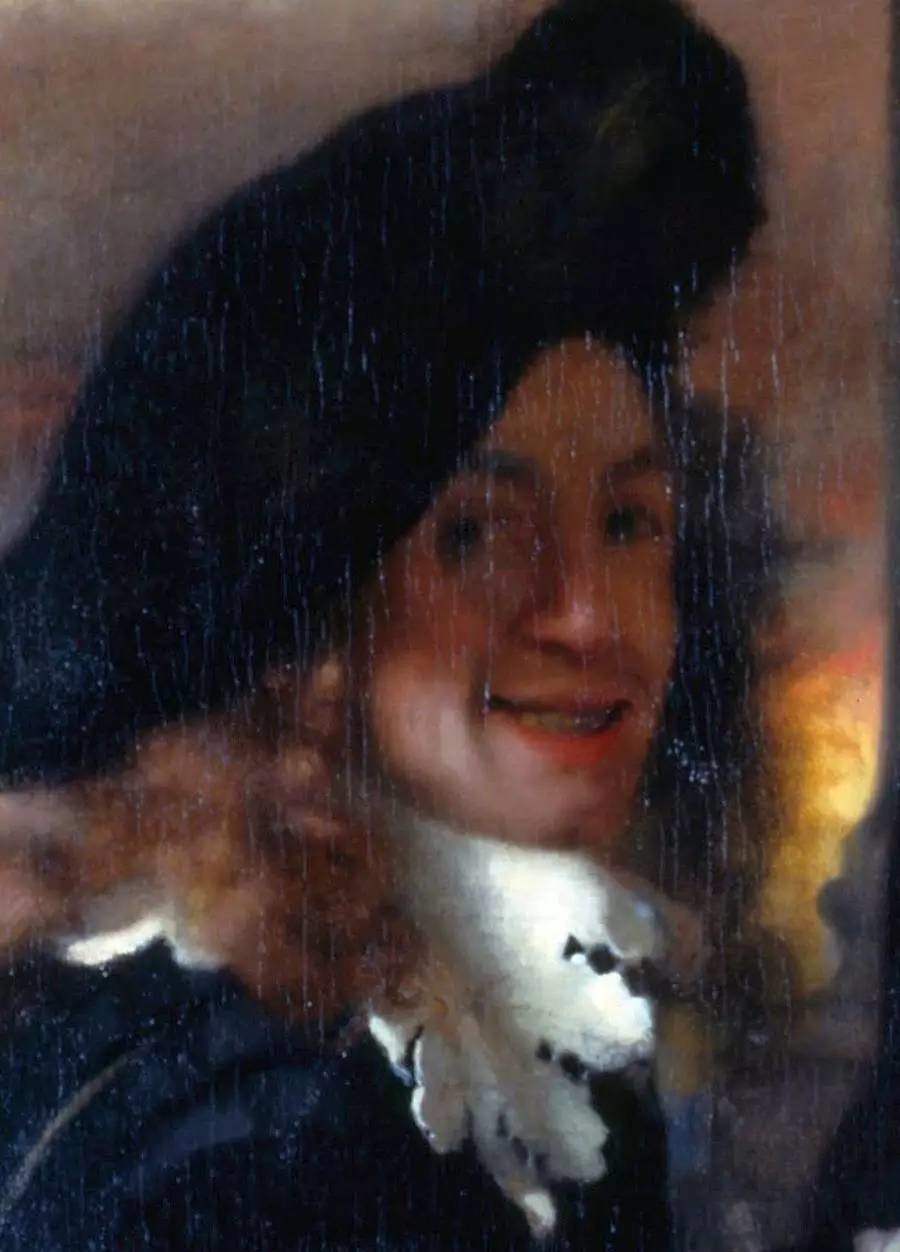The tied-up curtain in the foreground creates the impression that the viewer is looking at an intensely private and personal scene. There is also an element of trompe l'oeil as Dutch paintings were often hung with little curtains to conserve them. The device of painted curtains can be seen in other Dutch works of the period. The diagonals on the chequered floor create the impression of depth and three-dimensionality.
The fact that it is a love letter that the woman has received is made clear by the fact that she is carrying a lute (more specifically, a cittern, a member of the lute/guitar family). The lute was a symbol of love - often carnal love; luit (literally ‘lute’ in Dutch) was also a slang term for vagina. This idea is further reinforced by the slippers at the very bottom of the picture. The removed slipper was another symbol of sex. The floor brush would appear to represent domesticity and its placement at the side of the painting may suggest that domestic concerns have been forgotten or pushed aside.
The colors blue and gold are important in the composition of the painting. The gold which is located on the woman's dress, the top of the fireplace and many of the objects complements the blue on the floor, the maid's dress, the picture frames, etc. A classical influence is also apparent in the Ionic columns of the fireplace. The two paintings on the wall are also significant. The lower painting is of a stormy sea, a clear metaphor for tempestuous love. Above it is a landscape painting of a traveler on a sandy road. This may refer to the absence of the man who has written to the lady.
Happy Saturday!


 Johannes Vermeer
Johannes Vermeer